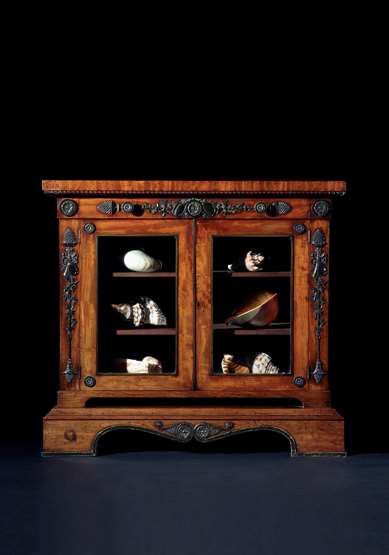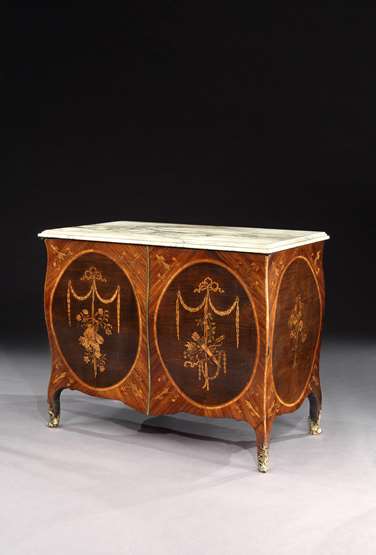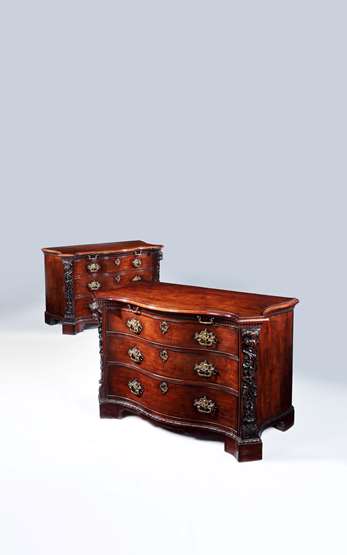A George I Period Burr Walnut Giltwood and Brass Mounted Bombe Bureau Cabinet
English, circa 1725
REF929
The bureau section of well formed bombe form with two short and three long drawers all veneered in densely figured burr walnut veneer and mounted with the original finely chased engraved handles and escutcheons. The fall similarly veneered in the finest burr veneer, opening to reveal an arrangement of drawers and pigeonholes with a central compartment hiding an arrangement of secret drawers.
The lower section of the bureau further mounted with elaborately pierced and finely engraved corner mounts, and raised on impressive carved and gilded paw feet.
The upper cabinet fitted with two mirrored doors, retaining the original Vauxhall bevelled plates over two candle slides. The doors opening to reveal an interior fitted with an arrangement of drawers, central cupboard, folio slides and bookshelves.
The broken arched pediment surmounted by a later carved and gilded cornice with central shell, flanked by a swan-necked pediment. Strap-work decoration with foliage on a stamped ground with two turned finials.
Height: 8’3” (251 cm)
Max Width: 42 in (106 cm)
Depth: 22 ½ in (57 cm)
PROVENANCE
Moigne Combe House, Dorset
Tyneham House, Dorset, The Bond Family
DESCRIPTION
The Bonds were a prominent and important family in Dorset for centuries. They first came to Tyneham, a village in south Dorset on the Isle of Purbeck, in 1683 when Nathaniel Bond bought both Tyneham House and Creech Grange. Tyneham House was originally built in 1523 and was a three story Elizabethan mansion set in beautiful grounds, with much of the village life revolving around the grand family home. It was considered by many as one of the most beautiful houses in Dorset. The house became the home of John Bond (1678-1744) and remained in the family for over 250 years.
John Bond’s ancestor, also named John Bond (1555-1633) was alleged to be an Elizabethan spy and believed to be the inspiration for Ian Fleming’s famous character, James Bond. Born in Dorset, John sailed with Francis Drake in his expedition to the Azores and was there at the battle of Santo Domingo in 1586. It is said that whilst at St. Domingo, he found a stone globe of the world, inscribed “Non sufficit orbis,” which translates as “The world is not enough,” a motto that was adopted by John for his own family. It is believed that John became the inspiration for the name and motto of James Bond, whose author knew the Isle of Purbeck well.
In 1943, the Bond family, and all other inhabitants of Tyneham village were given 28 days to evacuate their homes. As WWII headed towards D-Day, the War Office needed to requisition land for troop training and Tyneham’s 225 inhabitants were force to leave. In the following years, with the Cold War looming, Lulworth firing ranges were declared crucial to national defence and in 1952 the entire village was purchased, and the temporary evacuation became permanent. Tyneham House was dismantled and the Bond family moved permanently to Moigne Combe, after they were informed the house would not be returned to the family, a devastating realisation. Today, Tyneham remains in the property of the MoD but is open to the public.
Cornice replaced.
YOU MAY ALSO LIKE
A George I Period Burr Walnut Giltwood and Brass Mounted Bombe Bureau Cabinet


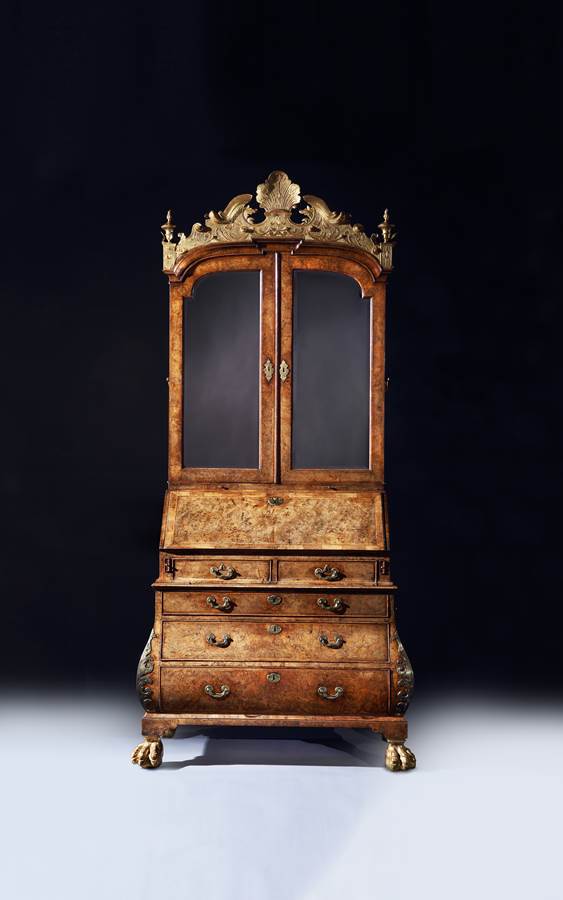
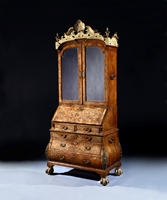

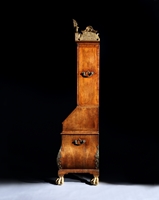
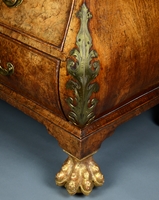
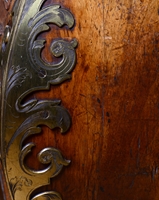


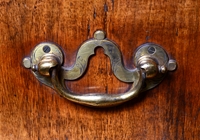
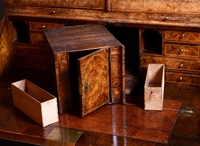
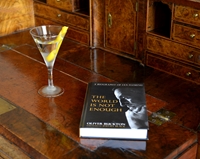
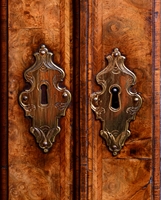
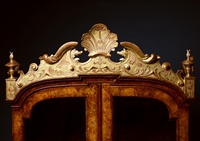
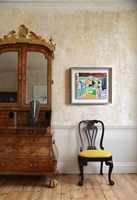

 PRINT
PRINT SHARE
SHARE